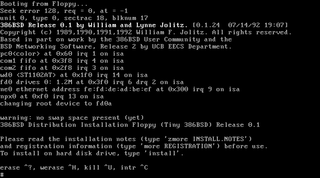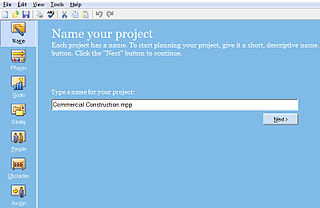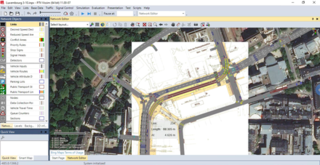 W
W386BSD is a discontinued Unix-like operating system based on the Berkeley Software Distribution (BSD). It was released in 1992 and ran on PC-compatible computer systems based on the 32-bit Intel 80386 microprocessor. 386BSD innovations included role-based security, ring buffers, self-ordered configuration and modular kernel design.
 W
WAVG AntiVirus is a line of antivirus software developed by AVG Technologies, a subsidiary of Avast. It is available for Windows, macOS and Android.
 W
WCorel Photo-Paint is a raster graphics editor developed and marketed by Corel since 1992. Corel markets the software for Windows and Mac OS operating systems, previously having marketed versions for Linux. Its primary market competitor is Adobe Photoshop.
 W
WErwise is a discontinued pioneering web browser, and the first commonly available with a graphical user interface.
 W
WGNU Oleo is a discontinued lightweight free software spreadsheet originally designed as a text-based spreadsheet using the curses library. The last development version of Oleo, 1.99.16, was released in 2001.
 W
WKiCad is a free software suite for electronic design automation (EDA). It facilitates the design of schematics for electronic circuits and their conversion to PCB designs. KiCad was originally developed by Jean-Pierre Charras. It features an integrated environment for schematic capture and PCB layout design. Tools exist within the package to create a bill of materials, artwork, Gerber files, and 3D views of the PCB and its components.
 W
WLynx is a customizable text-based web browser for use on cursor-addressable character cell terminals. As of 2020, it is the oldest web browser still being maintained, having started in 1992.
 W
WMacWWW, also known as Samba, is an early minimalist web browser from 1992 meant to run on Macintosh computers. It was the first web browser for the classic Mac OS platform, and the first for any non-Unix operating system. MacWWW tries to emulate the design of WorldWideWeb. Unlike modern browsers it opens each link in a new window only after a double-click. It was a commercial product from CERN and cost 50 European Currency Units
 W
WMicrosoft Access is a database management system (DBMS) from Microsoft that combines the relational Microsoft Jet Database Engine with a graphical user interface and software-development tools. It is a member of the Microsoft Office suite of applications, included in the Professional and higher editions or sold separately. It is also a member of the Microsoft 365 suite. Latest versions have more protections. A trial version of the software is available.
 W
WMicrosoft Office 3.0 was a release of Microsoft Office. It was the second major release for the Microsoft Windows operating system and the third on the Macintosh, preceding Microsoft Office 4.0. Omitting version 2 entirely on Windows, Microsoft released Office 3.0 on August 30, 1992. Previously, these components were distributed separately for Windows, and it was with Microsoft Office that they were combined as a full office suite.
 W
WMicrosoft Visio is a diagramming and vector graphics application and is part of the Microsoft Office family. The product was first introduced in 1992, made by the Shapeware Corporation. It was acquired by Microsoft in 2000.
 W
WElastic Reality was a warping and morphing software application available on Windows, Macintosh, Silicon Graphics workstations and Amigas and was discontinued in 1999.
 W
WNeoPaint is a raster graphics editor for Windows and MS-DOS. It supports several file formats including JPEG, GIF, BMP, PNG, and TIFF. The developer, NeoSoft, advertises NeoPaint as being simple enough for use by children while remaining powerful enough for the purposes of advanced image editing.
 W
WOpenGL is a cross-language, cross-platform application programming interface (API) for rendering 2D and 3D vector graphics. The API is typically used to interact with a graphics processing unit (GPU), to achieve hardware-accelerated rendering.
 W
WOrigin is a proprietary computer program for interactive scientific graphing and data analysis. It is produced by OriginLab Corporation, and runs on Microsoft Windows. It has inspired several platform-independent open-source clones and alternatives like LabPlot and SciDAVis.
 W
WPlan 9 from Bell Labs is a distributed operating system, originating in the Computing Science Research Center (CSRC) at Bell Labs in the mid-1980s, and building on UNIX concepts first developed there in the late 1960s. The final official release was in early 2015.
 W
WProject KickStart is desktop project management software by Experience in Software, Inc. in Berkeley, California. The program uses a wizard-like interface for project planning.
 W
WPTV Vissim is a microscopic multi-modal traffic flow simulation software package developed by PTV Planung Transport Verkehr AG in Karlsruhe, Germany. The name is derived from "Verkehr In Städten - SIMulationsmodell". PTV Vissim was first developed in 1992 and is today a global market leader.
 W
WQt is a free and open-source widget toolkit for creating graphical user interfaces as well as cross-platform applications that run on various software and hardware platforms such as Linux, Windows, macOS, Android or embedded systems with little or no change in the underlying codebase while still being a native application with native capabilities and speed.
 W
WSoftlanding Linux System (SLS) was one of the first Linux distributions. It was founded by Peter MacDonald in May 1992. Their slogan at the time was "Gentle Touchdowns for DOS Bailouts".
 W
WtkWWW is an early, now discontinued web browser and WYSIWYG HTML editor written by Joseph Wang at MIT as part of Project Athena and the Globewide Network Academy project. The browser was based on the Tcl language and the Tk (toolkit) extension but did not achieve broad user-acceptance or market share, although it was included in many Linux distributions by default. Joseph Wang wanted tkWWW to become a replacement for r r n and to become a "swiss army knife" of networked computing.
 W
WViolaWWW is a discontinued browser, the first to be popular for the World Wide Web (WWW). It was first released in 1991/1992 for Unix and acted as the recommended browser at CERN, where the WWW was invented, but eventually lost its position as most frequently used browser to Mosaic.
 W
WThe Virtual Theatre is a computer game engine designed by Revolution Software to produce adventure games for computer platforms. The engine allowed their team to script events, and move animated sprites against a drawn background with moving elements using a point-and-click style interface. Upon its first release, it rivaled competing engines like LucasArts' SCUMM and Sierra's Creative Interpreter, due to its then high level of artificial intelligence. The engine was first proposed in 1989, while the first game to use it, Lure of the Temptress, was released in 1992, followed by Beneath a Steel Sky (1994), Broken Sword: The Shadow of the Templars (1996) and Broken Sword II: The Smoking Mirror (1997).
 W
WWindows 3.1 is a series of obsolete 16-bit operating environments produced by Microsoft for use on personal computers, released on April 6, 1992. The series began with Windows 3.1, which was first sold during April 1992 as a successor to Windows 3.0. Subsequent versions were released between 1992 and 1993, notably Windows 3.11, until the series was superseded by the Windows 9x series starting in 1995 with Windows 95. During its lifespan, Windows 3.1 introduced several enhancements to the still MS-DOS-based platform, including improved system stability, expanded support for multimedia, TrueType fonts, and workgroup networking.
 W
WWindows for Pen Computing is a software suite for Windows 3.1x, that Microsoft designed to incorporate pen computing capabilities into the Windows operating environment. Windows for Pen Computing was the second major pen computing platform for x86 tablet PCs; GO Corporation released their operating system, PenPoint OS, shortly before Microsoft published Windows for Pen Computing 1.0 in 1992.
 W
WwxWidgets is a widget toolkit and tools library for creating graphical user interfaces (GUIs) for cross-platform applications. wxWidgets enables a program's GUI code to compile and run on several computer platforms with minimal or no code changes. A wide choice of compilers and other tools to use with wxWidgets facilitates development of sophisticated applications. wxWidgets supports a comprehensive range of popular operating systems and graphical libraries, both proprietary and free, and is widely deployed in prominent organizations.